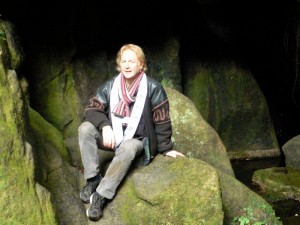Green Shinto is a blog by John Dougill operating out of Kyoto, Japan, which is dedicated to the promotion of an open, international and environmental Shinto. It seeks to celebrate the rich heritage of the tradition, from sacred rocks and shamanistic roots to bawdy myths and fertility festivals. It believes Shinto to be essentially diverse, localised and community oriented. It looks to a Shinto free of borders, liberated from its past to meet the demands of a new age. It looks in short to a Shinto that is green in deed as well as in word.
Comments on individual website articles can be made in the Comments box. If you would like to write to John Dougill directly, please address email to john (at) greenshinto.com
John Dougill works as a professor of British Culture at Ryukoku University in Kyoto. He is the owner of Oxface Publications, which produces popular guidebooks to Oxford such as the long-selling Oxford’s Famous Faces and Oxford: A Literary Guide. He is also the author of Oxford in English Literature. In addition, he has written fourteen Japanese college textbooks as well as Kyoto: A Cultural Guide (Signal/OUP, 2006), with a Foreword by Donald Richie, and In Search of Hidden Christians (Tuttle, 2012) praised by Lonely Planet Japan author Chris Rowthorne as ‘one of the most compelling and important books on Japan in recent years’. His latest publication is Japan’s World Heritage Sites (Tuttle, 2014), a large-size and richly illustrated overview of the various temples, gardens, castles and natural wonders for which the country is so justly renowned.
For several years John Dougill was a moderator for the Shinto mailing list, and he has also worked closely with the project to establish a UK Jinja. He is an associate editor of Japanese Religions, published by NCC in Kyoto, and collaborated with Joseph Cali on the extensively researched Guide to Shinto Shrines, published by University of Hawaii Press in 2013. His current projects concern a journey into the heart of Japan’s mythology and a cultural comparison between Shinto and pre-Christian paganism in Europe.

